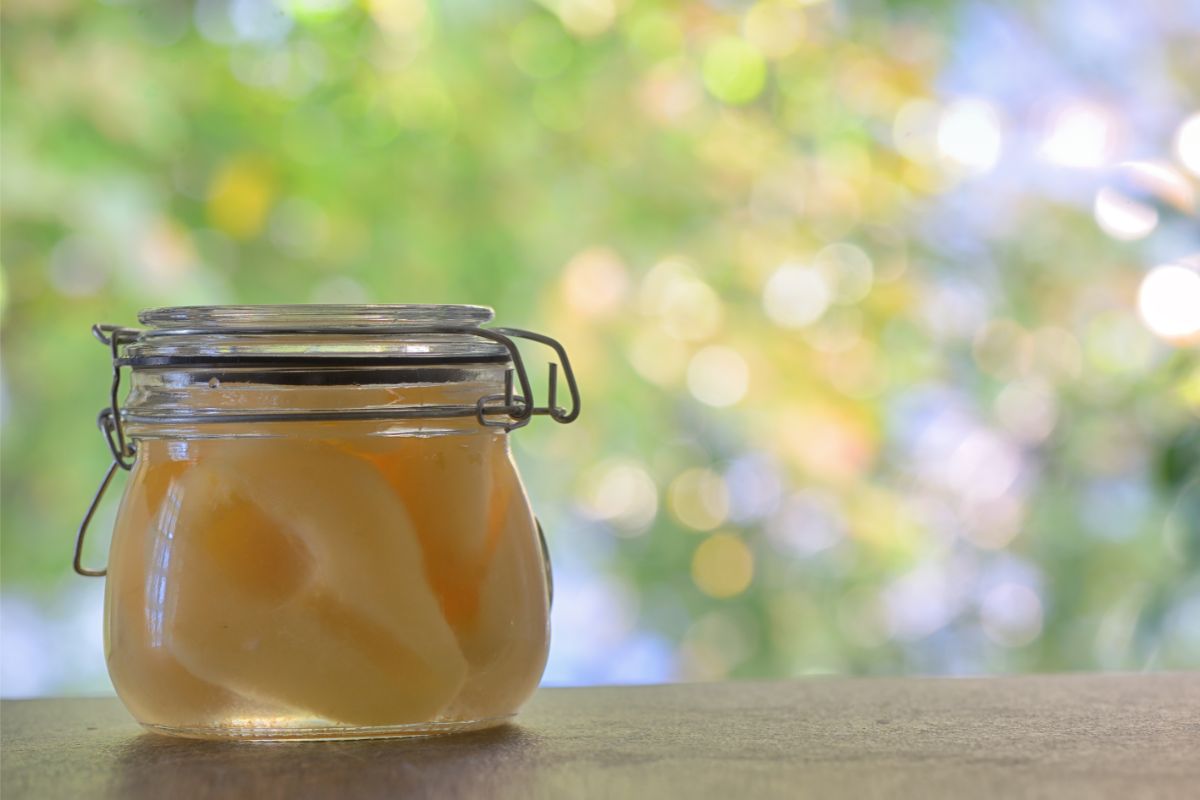When canning pears without sugar, soak the washed, peeled, and cored pear halves in a lemon juice solution for 2-3 minutes to prevent discoloration. Cook the drained pears for 5 minutes and process them in a boiling water bath canner for 20-40 minutes.
Should Pears Be Water Bath Canned or Pressure Canned?
With a pH range of 3.6-4.0, pears can be canned using either a water bath canner or a pressure canner. The only exception is Asian pears, which are low in acid and require pressure canning or acidification before water bath canning.
The National Center for Home Food Preservation (NCHFP) provides guidelines for canning pears using water bath canners and pressure canners. However, it acknowledges that pressure canning may cause pink discoloration because of the higher temperatures, even though the processing times are shorter.
Print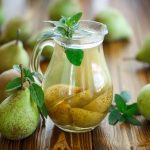
Home Canning Pears Without Sugar Recipe
- Total Time: 55 minutes
Description
Pears are sweet and can be canned with no added sugar. Here’s an easy canned pear recipe to help you ace it the first time.
Ingredients
- 8 pounds of pears
- 16 cups water
- 2 tablespoons bottled lemon juice
- 8–10 cups apple juice or white grape juice
- 4–5 cups water (optional, for diluting apple juice if used)
Instructions
- Collect the best pears from the grocery store or pre-harvested ones from your pear trees. Choose ripe pears that are still firm, as their likelihood of turning mushy is low. You’ll need 2-2.5 pounds of pears per quart, depending on fruit size. Bartlett pears are the best, but you can also try Comice, Red Anjou, or Bosc pears.
- Prepare your canning supplies, including your water bath canner and 6 pint jars or 4 quart jars with their lids and ring bands. Wash the lids and bands in warm soapy water. Use warm plain water to rinse the soap off.
- Put the canning jars in a large pot of fresh water to submerge them. Heat the water to a simmer to keep the jars hot.
- Put a clean canning rack inside the canner and add water until it reaches the half-full level. Bring the water to a simmer at 180°F over medium-high heat.
- Make a lemon juice solution by mixing the bottled lemon juice with 2-2½ cups of cold water in a large bowl.
- Prepare the pears. Wash the fruits under cool running water. Cut the stems and remove them. Use a sharp paring knife to peel the pears.
- As you finish preparing the fruits, boil plain water, white grape juice, or diluted apple juice in a large pot.
- Halve the pears and core them with a melon baller or metal teaspoon. Scoop out the seed core and the stringy core. You may also make sliced pears instead of halved pears if preferred.
- Soak the peeled and cored pear halves in the lemon juice solution for 2-3 minutes. Soak each half as soon as you are done coring it.
- Use a colander to drain the pear halves.
- For a raw pack, fill the jars with cold pears and hot canning liquid and adjust the headspace before capping them with lids and processing.
- For a hot pack, boil the drained pears in plain water or fruit juice for 5 minutes. Use a slotted spoon to pack the hot pears into the hot jars. Use a canning funnel and ladle to top up the jars with the hot cooking liquid, allowing ½-inch headspace.
- Remove air bubbles with a wooden spoon by running it inside the jars.
- Wipe the jar rims with paper towels moistened with vinegar. Cap the jars with new canning lids and apply clean screw bands until fingertip tight on each jar.
- Load the canner with the filled jars, taking care not to tilt or turn the jars using a jar lifter. Set the jars on the canning rack inside the canner. The tops of the jars should be covered with 1-2 inches of hot water.
- Increase the heat to high and bring the canner to a vigorous boil. Close the lid to process the jars per the elevation-time adjustments below:
Processing Times for Hot-pack Pear Halves in a Boiling Water Bath Canner
- 0 -1,000: 20 minutes for pints; 25 minutes for quarts
- 1,000 -3,000: 25 minutes for pints; 30 minutes for quarts
- 3,001 – 6,000: 30 minutes for pints; 35 minutes for quarts
- Above 6,000: 35 minutes for pints; 40 minutes for quarts
Post Processing
- Having maintained a rolling boil from the start of the timing to the end, remove the canner from the heat. Open the lid to allow the steam to escape for 5 minutes before removing each jar with a jar lifter.
- Place the processed jars on a flat surface lined with warm towels.
- Leave the lids untouched and let the jars cool for 12-24 hours without disturbing them.
- Unscrew the ring bands to inspect the seals. Refrigerate any jars that have lids that flex upon pressing them and use within one month.
- For all sealed jars, wipe the exteriors of the jars with cool water. Dry and label them with the contents and canning date before storing them in a cool, dark, dry place.
- Prep Time: 25 minutes
- Canning Time: 25 minutes
- Cook Time: 5 minutes
Nutrition
- Serving Size: 1/3 pint
- Calories: 200kcal
- Sugar: 40g
- Sodium: 17mg
- Fat: 0g
- Saturated Fat: 0g
- Carbohydrates: 51g
- Fiber: 7g
- Protein: 1g
- Cholesterol: 0mg
Sugar Substitutes for Canning Pears
While pears have their own sugar, you might want to make them sweeter by adding sugar or an alternative. You may can pears with honey, but it has more calories than cane sugar.
Another option is maple syrup. You’ll have to use less as it is much sweeter than table sugar. Its color may also brown your pears.
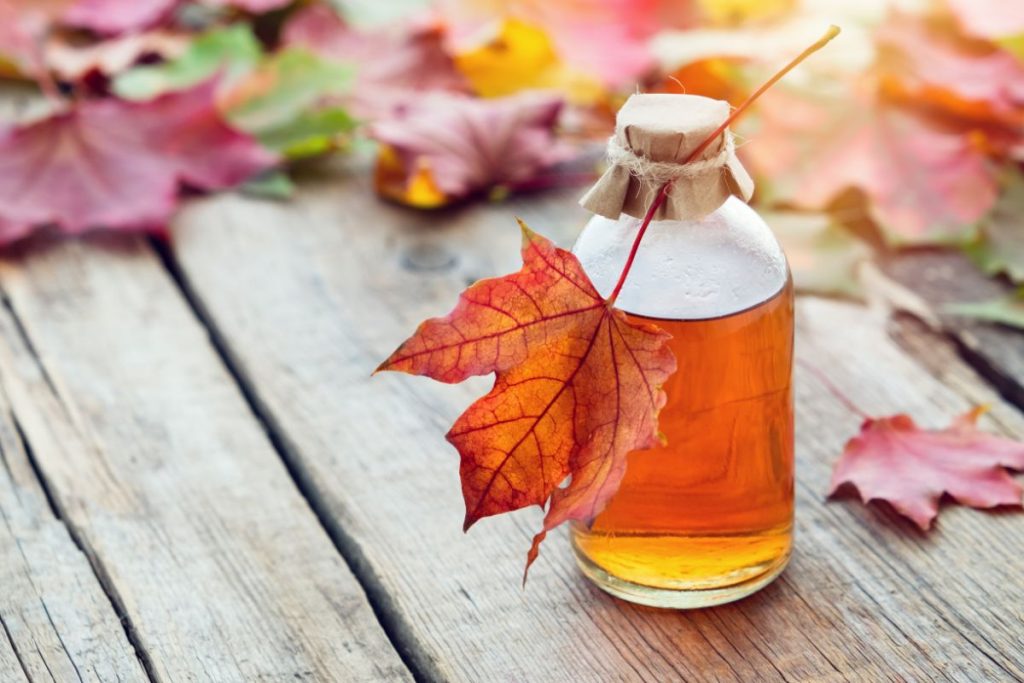
Is Sugar Necessary for Canning?
According to the NCHFP, sugar helps with flavor, shape, and color retention when canning fruits. It doesn’t prevent food spoilage. Sugar also acts as a sweetener in the canning process.
Although it serves these purposes, sugar isn’t necessary in most recipes because it doesn’t contribute to canning safety. High acidity and high heat kill the microorganisms that would cause botulism. The USDA even has fruit canning directions that allow canning fruits in plain water without sugar syrup.
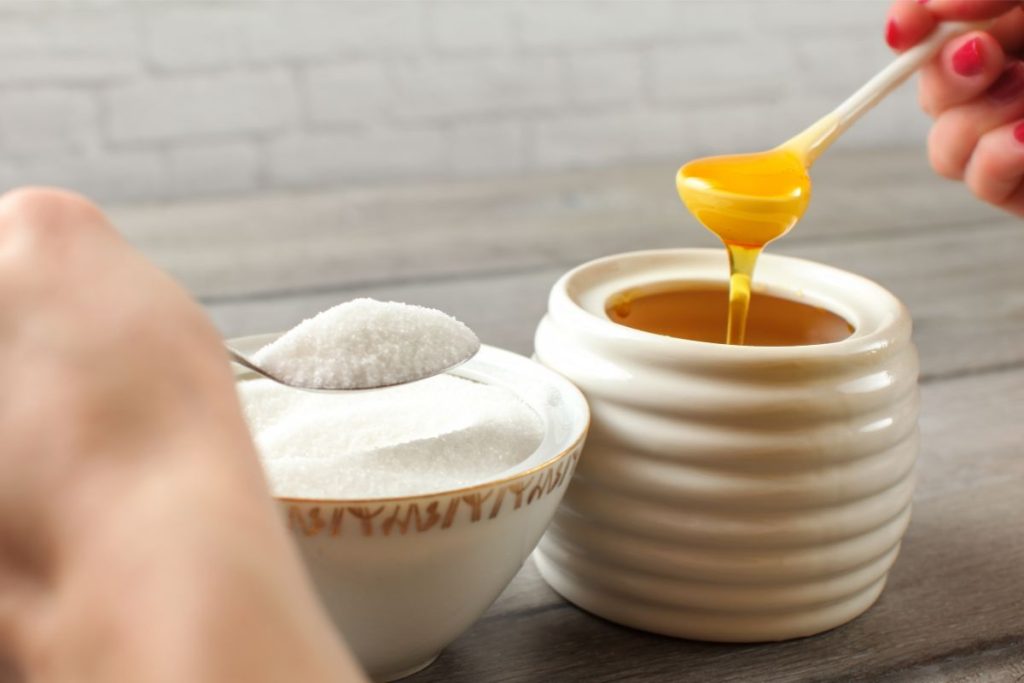
What Canning Liquid is Best for Canning Pears Without Sugar?
Canning pears without sugar means not adding refined or table sugar in the process. The canned fruits will still have their natural sugar. The canning liquid you use may also add sugar if it’s sweetened.
To avoid increasing the amount of sugar in the preserved pears, try using the following unsweetened liquids or watered-down fruit juice instead of sugar syrup:
- Apple juice: If you use apple juice, dilute it with equal parts of water to manage calories and avoid altering the flavor of the pears.
- Frozen pineapple juice: Dilute with water to manage the flavor and calories.
- Pear juice: Used for the best flavor preservation.
- Plain water: Canned pears may lose some sweetness to water.
- White grape juice: Preferred for its neutral flavor and color.
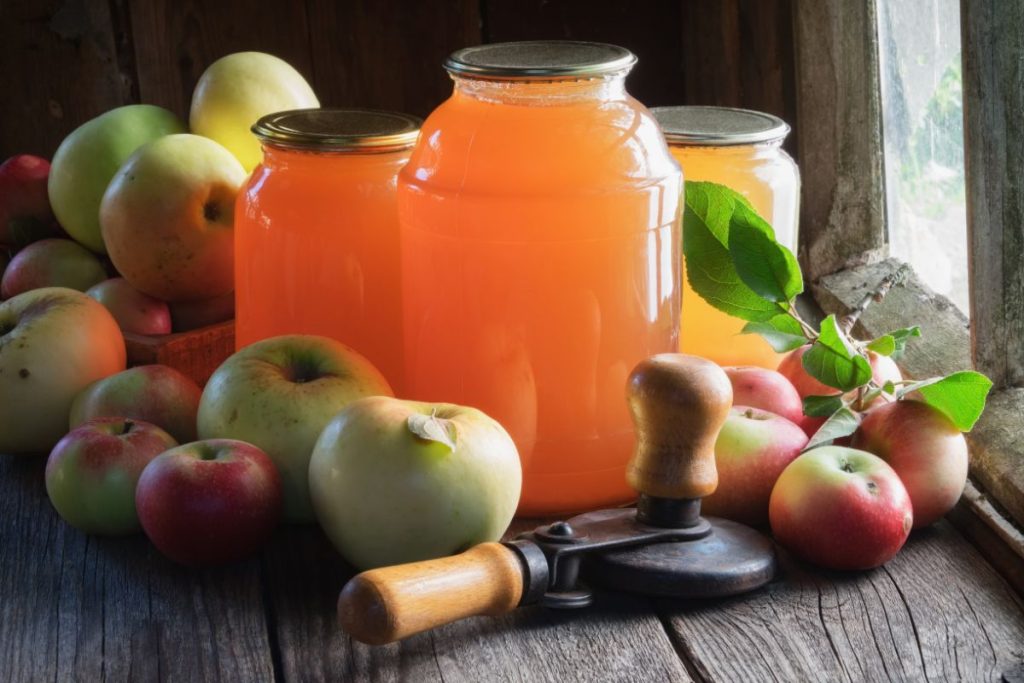
Cold Pack vs Hot Pack Pears for Canning
The hot pack method is better than cold packing for pears and is recommended for canning recipes without added sugar. Hot packing also produces a better product, especially when canning fruits using plain water. Hot packing pushes oxygen from the fruit to prevent the floating problem observed with raw packing, which compromises the integrity of seals.
Although the raw pack method produces low-quality canned pears, it includes less work and is much faster.
Do You Need to Add Lemon Juice to Canned Pears?
No – you don’t need to add lemon juice to pears to ensure safe canning. However, there’s no harm in adding it. Some home canning enthusiasts prefer canned pears with more acidity, so they add lemon juice to each jar before canning. When canning pears, lemon juice helps prevent browning or discoloration.
It’s better to use bottled lemon juice than its freshly squeezed counterpart. Bottled lemon juice has guaranteed acidity levels at 2-3 pH, while fresh lemon juice has unpredictable pH and is less reliable.
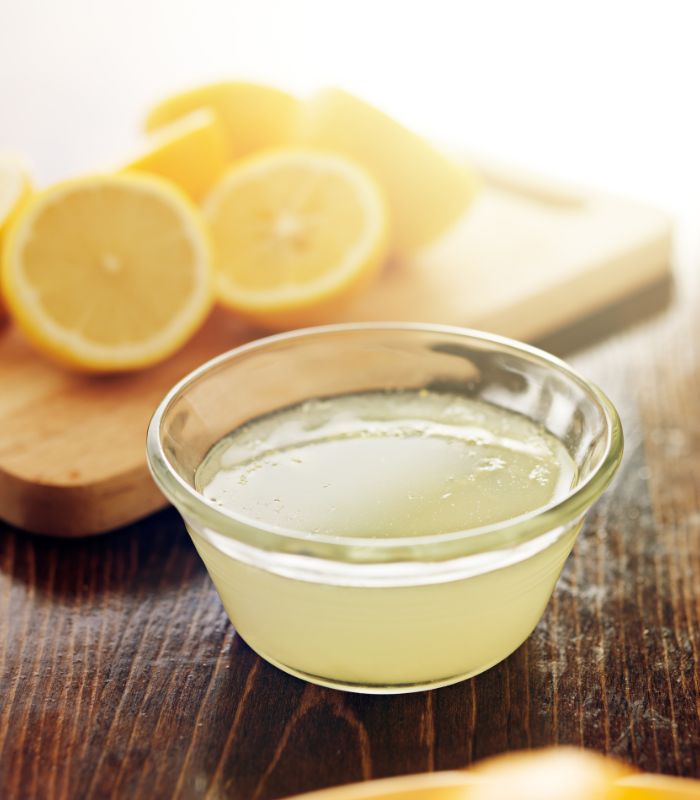
How to Store Canned Pears
Canned pears should be stored at room temperature in a cool, dry, dark location like the cellar, basement shelf, or kitchen pantry. Avoid storing canned pears in an area with temperature fluctuations or direct sunlight, as these can lead to spoilage.
What is the Shelf Life of Pears Canned Without Sugar?
Pears canned with no sugar have a shelf life of 18-24 months but are best used within 12 months for the best flavor, texture, and color. If you canned the pears in plain water, use them within six months for the best flavor.

